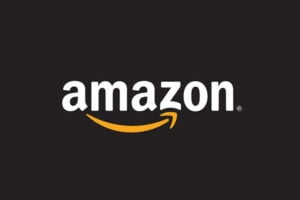Amazon wants to stop selling CRaP products and get merchants to do the work of supplying them instead. Amazon merchants now sell more than half of all products sold on Amazon and, having conditioned consumers to buy just about everything on Amazon the marketplace is starting to get choosy about which brands and manufacturers they want to work with.
The Wall Street Journal reports that Amazon are reassessing many of the heavy or bulky products they sell which are expensive to store and fulfil. These unprofitable items have been given the somewhat unfortunate acronym – CRaP products – which stands for ‘Can’t Realise a Profit’.
Amazon don’t want to stop selling these items, they indeed want consumers to continue to buy from them but Amazon don’t fancy selling these items themselves when they’re operating on razor thin margins. They’d very much prefer merchants to sell CRaP products whilst Amazon Retail focus on higher margin lines.
Amazon CRaP products include items such as bottles of water, paper towels, and snack foods, which are usually sold for less than $15, are heavy and/or bulky, and have margins lower than other products that Amazon sell.
It’s worth noting that in their drive to eliminate CRaP products, Amazon typically only make about 5% margins on products sold through their retail operations but make double the margin – around 10% – on products supplied and sold by third party merchants. Retail is expensive but Amazon charge merchants fees for selling and that’s essentially free money as there’s no Amazon investment in stock required.
The Wall Street Journal suggests that Amazon are working with some manufactures (citing Coca-Cola) where Amazon sales will be shipped directly from the manufacturer. They are working with other brands to have products repackaged so that they become more profitable to sell online. For all of the other CRaP products, Amazon are relying on their legion of third party merchants to pick up the slack.
If you suddenly spot that Amazon has ceased direct sales of a particular product set, do you homework before jumping in and ordering stock. It may be a great opportunity to pick up sales, or it may simply be CRaP products where you’ll also struggle to make a margin.










3 Responses
Here is a little gem someone was putting about on facebook.
Amazon do not stock or hold a growing number of items anymore but advertise they do. Due to a neat bit of manipulation.
A seller puts an item on Amazon at £100 and he is the only one selling it. Amazon encourage the seller to offer it as Seller Fulfilled Prime and so he gives it a go. He expects sales to grow (hopefully) and after fees of around £15 expects £85 still. Then suddenly Amazon are selling it at £100 Prime.
When a buyer looks they may feel safer buying from Amazon so do so. But behind the scenes Amazon has a system which passes the order to the seller who is offering Seller Fulfilled Prime. They take the hit on shipping they also take the hit on any returns and the buyer still sits there saying “oh i bought from Amazon”. so plenty of promo for them with no risk or storage.
Plus Amazon still get the £15. He said to prove it was happening he removed the item from Seller Fulfilled Prime and the item immediately went out of stock for Amazon. So he gave it 30 minutes and put it back on Seller fulfilled Prime and it immediately appeared in stock on Amazon again.
So if that is true they are not needing to hold any stock of products that sellers offer prime on the platform as sellers offering Prime are footing the storage costs, shipping costs, and any return costs.
The reason Amazon do it is the financial gains.
Normally they would have the item sat in a warehouse 100 items at £100 £10,000 of capital tied up plus floor space. Then packaging materials and staff to pack. Plus the risk of lost, damage or returns.
This way they get your £15 which yes they would get anyway but you pack, you post, you store, you risk loss and returns (by the way returns are billed at a profit by amazon on seller fulfilled also) £2.99 when actually they pay just £1.49
Yes they still only get the 15% they would have got if you had sold it anyway yourself but buyers seem to like the Amazon name and think Amazon have the whole planet covered in warehousing and supply everything themselves. Go i a NEXT store and see the different racks of clothes brands on the shelf you then realise some are Debenhams some are Lippy Top Shop and so on so its all a front to look better with stock.
But Amazon do not even need premises.
I would like 10 to 15% of everything with no risk.